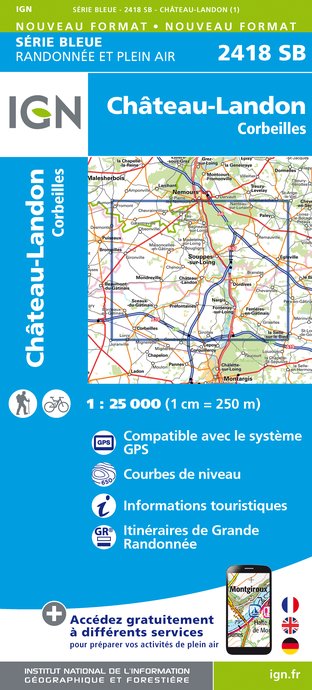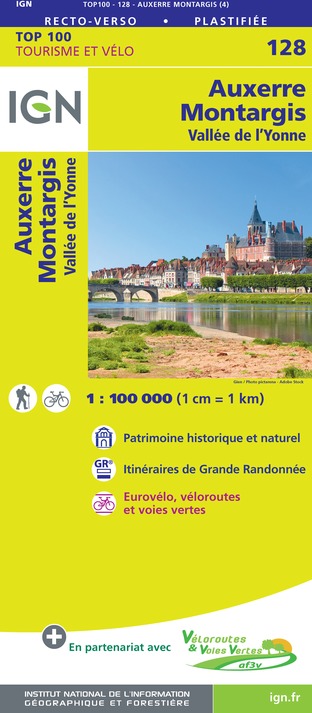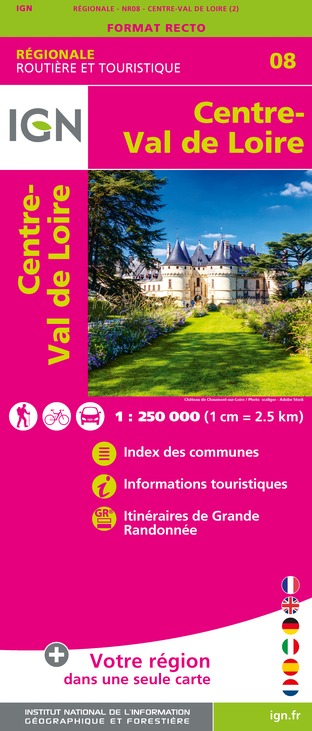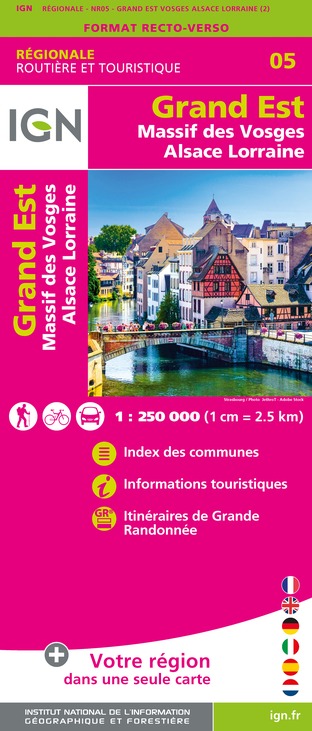Alert
Alerts
A waterside bike ride along the Loing Canal










IGN cards












Description
A pleasant bike ride along the Loing, following a section of the “Scandibérique” EuroVelo 3 trans-European bike route, between Souppes-sur-Loing and Moret-sur-Loing. More ambitious explorers can keep pedaling all the way to Fontainebleau and its majestic château.
Discover southern Seine-et-Marne via this waterside itinerary snaking along the Loing Canal, between Souppes-sur-Loing and the medieval and Impressionist town of Moret-sur-Loing. This portion of the “Scandibérique” EuroVelo 3 bike route (linking Trondheim in Norway to Santiago de Compostela in Spain) will allow you to explore this lovely region of water and light. The towpath is mostly tarred for smooth riding.
After Moret-sur-Loing, more ambitious cyclists can choose to pedal on to Fontainebleau and its splendid palace, once the residence of French monarchs.
Technical Information
Altimetric profile
Starting point
Steps
Points of interest
Additional information
Tips
Safety instructions and good practices: - Respect the French highway code and remain vigilant on and near all roads, particularly at intersections and when crossing départementales (secondary roads) and passing over bridges. To that end, carefully read the guide provided for each itinerary. - Wear a properly fitting helmet. At night and in bad weather, wear a fluorescent vest with reflective bands and carry a proper torch/flashlight. - Restrictions for children under 12: make sure that the loop you want to follow is well suited to your children. - After every picnic, leave no trash behind, and respect the wild flora and fauna. - Prior to departure, make sure that your smartphone or tablet is sufficiently charged. Consider taking along a charger. - If you happen to notice any anomaly while following an itinerary, please don’t hesitate to write us! We value all such observations and remarks.
Updated by
Seine et Marne Attractivité - 12/06/2025
www.tourisme-seine-et-marne.fr/
Report a problem
Open period
All year round.
Contact
Phone : 01 60 39 60 39
Email : info@attractivite77.fr
Website :
baladnature77.cirkwi.com/#!page=circuit&id=50738&langue=fr
www.tourisme-seine-et-marne.fr/
Facebook : www.facebook.com/77vivreengrand
Data author

The Cirkwi brief
Imagine a journey where your bike wheels whisper against the pavement, the gentle flow of the Loing Canal accompanies you, and the rich history of France's countryside unfolds with each pedal. This vision is brought to life by Seine et Marne Attractivité with their meticulously planned route from Souppes-sur-Loing to Moret-sur-Loing, and if you're feeling adventurous, all the way to Fontainebleau. This itinerary is not just a ride; it's an exploration of serene watersides, lush landscapes, and the inviting aura of French heritage. Ready your senses for an unparalleled adventure along the future European cycle route n°3.
Brief Technical Overview
The route extends approximately 46.5 km, beginning at an altitude of 45 meters and peaking at 97 meters, showcasing a positive elevation of over 546,000 meters—a testament to its gentle yet varying terrain. Predominantly asphalt paved, the path promises a smooth ride suitable for riders of all skill levels. The journey is not just a physical feat but a technical exploration, ideal for those looking to engage both body and mind in an immersive cycling experience.
Seasonal Tips & Safety
Embarking on this journey requires preparation and respect for each season's character. Spring and autumn, with their mild temperatures and scenic beauty, are perfect for those seeking a serene ride. Summer offers longer daylight hours but prepare for heat by carrying water and sunscreen. Winter rides, though rare, demand caution for potential icy patches. Regardless of the season, always ensure your bike is in excellent condition, wear proper gear, and keep informed about local weather forecasts for a safe and enjoyable experience.
Embarking Through History
Souppes-sur-Loing, Moret-sur-Loing, and Fontainebleau are not just waypoints on a map; they are vibrant testimonies to the rich tapestry of French culture and history. From Souppes-sur-Loing's quiet charm to the medieval and impressionist echoes in Moret-sur-Loing, and finally, the royal majesty of Fontainebleau, this route offers a journey through time. Each town contributes its unique story, where historical figures walked and landmark events shaped not just the region but the nation.
Climate Insight for Planned Visits
The climate in this region of France offers a temperate experience, characterized by mild winters and warm summers. Precipitation is distributed fairly throughout the year, peaking in late spring and early summer. For the optimal biking adventure, aim for late spring through early fall, when temperatures are comfortable, and the risk of heavy rains is reduced. This timing ensures not only a pleasant journey but also an opportunity to witness the vibrant natural colors and landscapes at their peak.




























